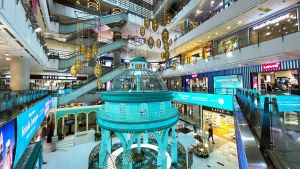JAKARTA - A special report from Reuters, on July 27, highlighted several worrying allegations about Tesla's approach to dealing with customer complaints regarding the distance from their car. Reuters has tried to contact Tesla and CEO Elon Musk, but has not received a reply.
According to the report, Tesla Model 3 owner named Alexandre Ponsin traveled long from Colorado to California in a used Tesla car he had just bought. With an estimated distance of 353 miles (568 km), Ponsin believes his car will reach an impressive distance claim from Tesla. However, he soon found that his car did not reach Tesla's claim and believe there was a problem with the battery of the car.
"In my view, the distance traveled decreased markedly in front of your eyes," said Ponsin.
Worried, he made a service appointment with Tesla. However, moments later, he received a series of text messages. The first message tells him that "distance diagnostics" have determined that the battery is functioning normally. The follow-up message reads, "We want to cancel your visit."
According to reports, Tesla formed the division because their service center was overwhelmed by the promise of services from thousands of Tesla car owners who were disappointed by the estimated distance displayed by computers in the car was different from the original.
Reuters spoke with people familiar with the team who believe that, in many cases, many of these cars don't really need repair - the owners are simply confused by the disappointing distance. Several automotive experts contacted by Reuters stated that Tesla cars often fail to reach the distance forecast advertised by the company.
What's worrying is that the Diversion team manager told employees that they managed to save the company's costs of around $1.000 with every canceled service promise, reducing the burden on the service center.
According to the results of the investigation, it was reported that Tesla began to enlarge their car's travel distance by rearranging the distance approximation software. It started about ten years ago with an algorithm that displays a higher, but unrealistic distance figure. Once the battery projection drops below 50%, a more realistic distance figure will be displayed to prevent car owners from being stuck in the middle of the road. Reuters sources said that there is a built-in security buffer that will provide an additional distance of about 15 miles after the indicator shows the battery is empty.
That said, the idea to increase the travel distance came directly from Elon Musk, according to a source who said, "Elon wants to show a good distance when the battery is fully charged. When you buy a car from the dealers and see a distance of 350 miles, 400 miles, it gives you a good feeling."
Earlier this year, quoted from Carbuzz, July 29, South Korean regulators fined the Texas-based company $2.2 million for not informing customers that the distance from the car could drop drastically in cold weather.
The Korean Trade Commission stated that Tesla's car distance claims "in one charge and effectiveness of fuel costs compared to gasoline" have been exaggerated, as have their Supercharger network performance.
Two months ago, Tesla also faced a high-end lawsuit, with car owners accusing new software updates of reducing travel distances.
SEE ALSO:
It should be noted that Tesla is not the only brand that has reportedly been disappointing in terms of travel distance. A study conducted by SAE International investigated 21 different electric car brands and found that the average tested car did not reach the advertised distance by 12.5%.
The English, Chinese, Japanese, Arabic, and French versions are automatically generated by the AI. So there may still be inaccuracies in translating, please always see Indonesian as our main language. (system supported by DigitalSiber.id)















